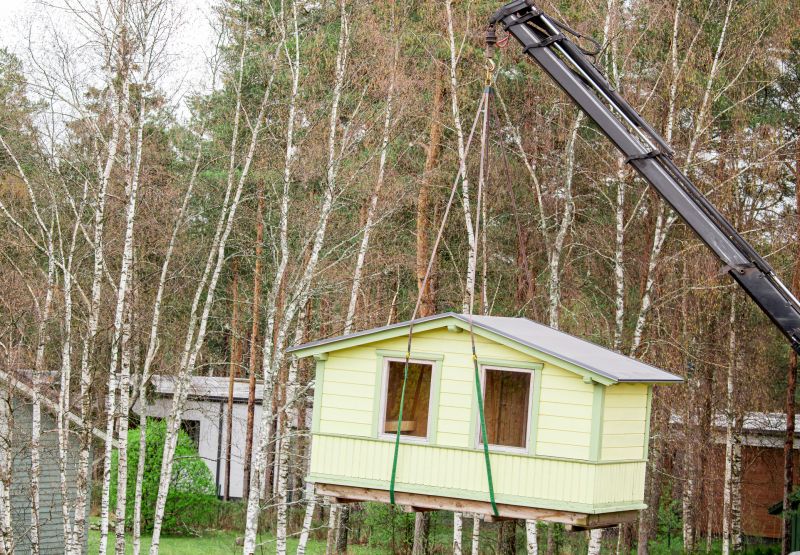Top-Rated House Lifting Service Products for Safe and Reliable Results
Identify high-performance equipment designed to meet the demands of professional house lifting and renovation projects.
 House lifting is a complex process that requires specialized equipment and careful planning to ensure structural stability and safety. Various products are designed to facilitate this process, ranging from hydraulic jacks to support beams and lifting systems. These tools enable contractors and homeowners to elevate a house for foundation repairs, basement conversions, or other structural modifications. Proper selection of lifting products is essential to achieve the desired results while maintaining safety standards.
House lifting is a complex process that requires specialized equipment and careful planning to ensure structural stability and safety. Various products are designed to facilitate this process, ranging from hydraulic jacks to support beams and lifting systems. These tools enable contractors and homeowners to elevate a house for foundation repairs, basement conversions, or other structural modifications. Proper selection of lifting products is essential to achieve the desired results while maintaining safety standards.
Top Overall Option
Hydraulic House Lifting System
A comprehensive hydraulic lifting system designed for precise and controlled house elevation projects. It typically includes synchronized hydraulic jacks, support beams, and safety features to facilitate safe lifting and stabilization. Such systems are adaptable for various house sizes and structures, making them a versatile choice for professional and serious DIY projects.
Types of Products For House Lifting Service
Hydraulic Jacks
Used for lifting specific sections of a house with precision and control.
Support Beams and Cribbing
Provides stability and support once the house is lifted.
Synchronized Hydraulic Lifting Systems
Allows multiple hydraulic jacks to operate in unison for even lifting.
Foundation Stabilization Posts
Supports and stabilizes the foundation during and after lifting.
Lifting Slings and Straps
Used to distribute weight and lift parts of the structure securely.
Hydraulic Power Units
Provides the necessary hydraulic pressure for lifting systems.
Adjustable Jack Stands
Supports the house at various points during the lifting process.
Temporary Shoring and Bracing
Supports the structure during the lifting and stabilization phases.
Lifting Frames and Rigs
Customizable frames to distribute lifting forces evenly across the structure.
Foundation Piering Equipment
Used for underpinning and stabilizing the foundation during lifting.
Hydraulic Spreaders
Help in spreading lifting force across wider sections of the house.
Base Plates and Load Distribution Pads
Ensure even load transfer from jacks to foundation or support beams.
Popular Choices
Widely used for their versatility and control in house lifting projects.
Commonly selected for stabilizing structures after lifting.
Popular for projects requiring coordinated lifting of multiple points.
Essential for providing consistent hydraulic pressure during lifts.
Preferred for distributing weight securely across lifting points.
Frequently used to support the structure during and after lifting.
Chosen for underpinning and stabilizing foundations during lifts.
Popular for versatile support at various lifting stages.
Often used for custom support and even force distribution.
Commonly selected for underpinning foundations before lifting.
When considering products for house lifting, it is important to understand the different types of equipment available. Hydraulic jacks, for example, are commonly used for precise lifting of specific sections of a structure. Support beams and cribbing are employed to stabilize the house once lifted, preventing any unwanted movement. Advanced lifting systems may incorporate synchronized hydraulic units that distribute weight evenly, reducing stress on the foundation and framing.
Safety and reliability are paramount in house lifting projects. Selecting high-quality, durable products that can withstand the weight and stress involved is crucial. Additionally, compatibility with existing structural elements and ease of use are important considerations. Professional-grade equipment often comes with detailed instructions and safety features to assist users in executing the lift safely and effectively.
Proper planning, including assessing the house's weight, foundation condition, and lifting points, is necessary before initiating any lifting operation. Consulting with structural engineers or experienced contractors can help determine the most suitable products and methods for each specific project. Investing in the right tools and equipment can make the process more efficient and help ensure the safety of both the structure and the workers involved.
Key Buying Considerations
- Weight capacity and load ratings to ensure suitability for your house size.
- Compatibility of lifting equipment with existing structural elements.
- Ease of use and setup, especially for DIY projects or less experienced users.
- Safety features such as pressure relief valves and locking mechanisms.
- Durability and material quality to withstand repeated use and heavy loads.
- Adjustability of support components to accommodate different house dimensions.
- Availability of technical support and detailed instructions from manufacturers.
- Versatility of the system to handle various types of lifting and stabilization tasks.
- Cost and budget considerations balanced with quality and safety features.
- Ease of transportation and storage of equipment when not in use.
- Compatibility with other tools and accessories used in house lifting.
- Reputation and reviews of the product or system from other users.
- Warranty and service options provided by the manufacturer.
- Compliance with safety standards and industry regulations.
- Potential for scalability if future lifting projects are planned.
